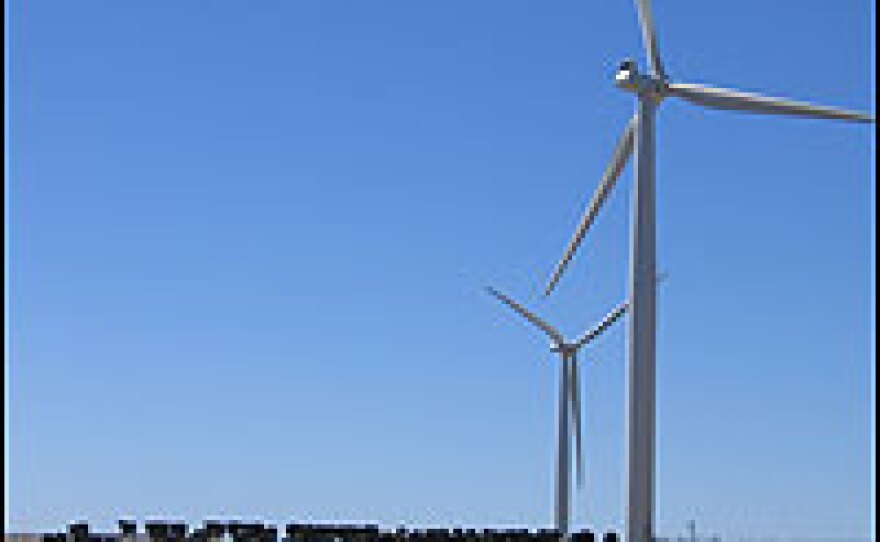


Look at the grass courts at Perth's Peppermint Grove Tennis Club, and it's difficult to believe the talk about drought and the possibility that this west Australian coastal city will run out of water.
Beyond the fence, sailboats and kayaks bob in the Swan River, a thick ribbon of blue that winds through a city bordered on the west by the Indian Ocean. It is a city where water seems to be everywhere. But Perth is facing a serious water shortage.
Over the past 10 years or so, the city has seen a 21 percent decline in rainfall, but the stream flow into dams — the actual amount running into storage — dropped about 65 percent, according to Malcolm Turnbull, Australia's minister for the environment and water resources.
"We've seen similar declines in stream flow, though not quite so dramatic across southern Australia," he says.
Turnbull calls Perth the "canary in the climate change coalmine," a city scrambling to find other sources of water for a growing population. The city is riding a wave of economic prosperity fueled by China's insatiable appetite for Western Australia's natural resources.
Perth, with a population of about 1.7 million, is growing 3 percent a year — about 750 families a week move to the city, says Gary Crisp of the Western Australia Water Corp.
"We need more water," he says. "We're absolutely running out."
The Water Corp. turned to the nearby Indian Ocean to help solve the problem.
The Kwinana Desalination Plant south of the city opened two months ago. The facility, the first of its kind in Australia, covers just a few acres in an industrial park next to the ocean.
The water is sucked in through a pipe about 650 feet offshore in Cockburn Sound, at a rate of about 0.1 meters per second, says project manager Simon McKay.
That is slow enough to let the fish escape, but fast enough to provide nearly 40 million gallons of drinking water each day — roughly 20 percent of Perth's daily consumption. That makes the plant the single largest source of water for the city.
McKay says it doesn't take very long for the seawater to be ready for the tap — about a half-hour from the time it comes out of the ocean until it's processed and distributed.
Desalination plants have been around in places like the Middle East for decades. But they've always been expensive to build and expensive to run. New technology has made them cheaper and more efficient, but they still consume a large amount of energy.
Environmentalists in Perth balked at the idea of using coal-fired plants to provide power for the one here, forcing the Water Corp. to find a non-polluting, renewable alternative. It found that alternative — wind energy — near the town of Cervantes, a three-hour drive north of Perth.
The Emu Downs Wind Farm houses 48 wind turbines, each as high as a 15-story building.
Kerry Roberts, the facility's general manager, says Emu Downs is among the top 10 or 20 sites for this type of energy alternative in Australia.
"If you look at the combined output of the wind farm at maximum wind speeds — 24 to 28 miles per hour — you're looking at an output of close to 80 megawatts," Roberts explains. That's enough power to run Perth's desalination plant, 160 miles to the south.
This successful marriage of renewable technology and necessity has Crisp, of the Western Australia Water Corp., thinking big: "I predict that desalination will account for at least half of Perth's water in the next 30 years."
Other water-stressed seaside cities in Australia are taking a serious look at desalination, as traditional water sources dry up because of lack of rain. Sydney, on Australia's southeast coast, is expected to commission a plant even larger than Perth's in the next few months.
Nonetheless, the desalination boom extends far beyond Australia's shores. McKay — the man in charge of getting Perth's plant running — will soon be off to Muscat, Oman, to build another. His company's order book is filling up quickly, he says, and he doesn't expect that to change in his lifetime. Neither does Crisp.
"The world is going reverse osmosis," he says, naming projects proposed from California to Spain.
"Desalination is here to stay, and, provided energy is not taken out of normal coal-burning systems, I believe it's the solution for the semiarid parts of the world," Crisp adds.
Copyright 2022 NPR. To see more, visit https://www.npr.org. 9(MDAzMjM2NDYzMDEyMzc1Njk5NjAxNzY3OQ001))







